《新编英语教程 2 教师用书》
| 作者 | 李观仪主编 编者 |
|---|---|
| 出版 | 上海:上海外语教育出版社 |
| 参考页数 | 271 |
| 出版时间 | 1999(求助前请核对) 目录预览 |
| ISBN号 | 7810465112 — 求助条款 |
| PDF编号 | 88703518(仅供预览,未存储实际文件) |
| 求助格式 | 扫描PDF(若分多册发行,每次仅能受理1册) |
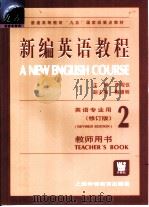
Unit 11
MAIN TEACHING POINTS1
1.The present perfect progressive indicating a finished action1
2.The past progressive indicating a circumstance and the simple past indicating a past event1
3.The past perfect progressive1
4.The I was wondering if...pattern as a polite form of request1
LISTENING COMPREHENSION101
An American Sighteeing in Athens1
Unit 21
MAIN TEACHING POINTS121
The nominal clause used as21
1.the subject complement introduced by that21
2.the subject complement introduced by a wh-word21
3.the appositive21
4.the subject introduced by what21
LISTENING COMPREHENSION21
Messages from the Media21
Unit 321
MAIN TEACHING POINTS23
The passive sentence23
1.involving the modal auxiliary have to23
2.converted from the active sentence with a direct and an indirect object23
3.involving the verb phrase/phrasal verb23
4.formed by the They say/It is said...patterns23
LISTENING COMPREHENSION31
Killing Two Birds with One Stone31
Unit 431
MAIN TEACHING POINTS33
Modal auxiliaries33
1.would+perfect infinitive used to express urfulfilled wish33
2.should/ought to+perfect infinitive used to express unfulfilled obligation33
3.needn t+perfect infinitive expressing unnecessary past actions33
4.may/might+perfect infinitive used to express speculations about past actions33
5.can/could not+perfect infinitive used to express negative deduction about past actions33
6.must+perfect infinitive used to express affirmative deduction about past actions33
7.may/might as well used with the second person pronoun expressing suggestions33
LISTENING COMPREHENSION43
Too Many Cats43
Unit 543
MAIN TEACHING POINTS45
LISTENING COMPREHENSION53
Telephone Calls53
Unit 653
MAIN TEACHING POINTS55
The adverbial clause55
1.of purpose introduced by so that55
2.of result introduced by so...that55
3.of concession introduced by no matter+wh-word/even if55
4.of comparison introduced by than55
5.of comparison in the the more...the more...pattern55
LISTENING COMPREHENSION63
Vitamins63
Unit 763
MAIN TEACHING POINTS65
1.The-ing participle used as the object of remember,forget and stopThe infinitive used as the object of remember,forget and stop65
2.The infinitive used as a noun modifier preceded by for and its logical subject65
3.The infinitive used as the postponed objectin the introductory it construction65
4.The-ing participle used as the object of a preposition65
LISTENING COMPREHENSION65
Pigeons65
Unit 865
MAIN TEACHING POINTS 7565
1.The relative clause introduced by when65
2.The relative clause introduced by where65
3.The relative clause preceded by the way(in which)65
4.The relative clause introduced by why65
5.Expressing increase by using times65
LISTENING COMPREHENSION65
Don t Forget to Remember!65
Unit 965
MAIN TEACHING POINTS65
1.The subjunctive were after I wish,indicating a present non-fact65
2.The subjunctive had been after I wish,indicating a past non-fact65
3.Sentences of unreal conditions related to the future65
LISTENING COMPREHENSION90
Computers90
Unit 1090
MAIN TEACHING POINTS92
1.The future expressed by be about to92
2.be going to in the past expressing implied intention92
3.The past perfect used in the hardly...when...pattern92
4.The past perfect of hope+infinitive expressing an unfulfilled wish92
5.The simple past in the It s time+subject+past-tense verb pattern92
LISTENING COMPREHENSION100
Language Without Words100
Unit 11100
MAIN TEACHING POINTS102
The nominal clause used as102
1.the subject,introduced by It seems that102
2.the subject,introduced by It happens that102
3.the subject,introduced by It doesn t matter+wh-word102
4.the object in the It all depends on+wh-word pattern102
5.the postponed object in the introductory it construction102
LISTENING COMPREHENSION110
The Present110
Unit 12110
MAIN TEACHING POINTS112
The pass?ve sentence112
1.converted from an active sentence containing the make somebody do something pattern112
2.formed by get+ -ed participle112
3.with a past perfect modal auxiliary112
4.converted from an active sentence containing the know/think somebody to be pattern112
5.converted from an active sentence containing the want somebody to do something pattern112
LISTENING COMPREHENSION119
Looking into the Future—A ralk given by Dr.Pyke in the 1980s119
Unit 13119
MAIN TEACHING POINTS121
Modal auxiliaries121
1.ought to used to express strong probability121
2.used to expressing a past action/situation which is no longer done/no longer exists121
3.daren t expressing lack of courage121
4.should in the introductory it construction121
5.should used after certain verbs121
LISTENING COMPREHENSION130
Announcements130
Unit 14130
MAIN TEACHING POINTS132
Indirect speech introduced by various kinds of reporting words132
LISTENING COMPREHENSION141
The World of Helen Keller141
Unit 15141
MAIN TEACHING POINTS143
The adverbial clause143
1.of time introduced by while/as soon as/the moment/by the time143
2.of time and place introduced by whenever and whereverof concession introduced by howeverof time/cause introduced by now that143
3.of condition introduced by or elseof purpose introduced by so(that)143
4.of manner introduced by as if/as though,indicating an unreal situationof time/condition introduced by so long as/as long as143
5.of degree introduced by so far asof alternative condition introduced by whether...or not143
LISTENING COMPREHENSION153
Why Do the British Drive on the Left?155
Unit 16155
MAIN TEACHING POINTS155
1.The-ed Participle used as the object complement in the have something done pattern155
2.The inf?tive that takes a logical object,which is the subject of the sentence155
3.The-ing participle used as the object of the preposition155
4.The-ing participle used as the postponed object in the introductory it construction155
5.The-ing participle used as the object complement155
LISTENING COMPREHENSION163
Challenges165
Unit 17165
MAIN TEACHING POINTS165
1.The relative clause introduced by pronoun+of+which165
2.The relative clause introduced by who/that and preceded by another relative clause165
3.The relative clause introduced by that and containing there be175
4.The relative clause introduced by which,its antecedent being the main clause175
LISTENING COMPREHENSION175
Parent-Child Relationships176
Unit 18176
MAIN TEACHING POINTS176
Sentences of unreal conditions183
1.related to something being done at present183
2.with the connective unless183
3.with the connective supposing183
4.with the connective otherwise183
5.in the if it hadn t been for...pattern183
LISTENING COMPREHENSION183
Visiting the Taj Mahal185
A Sample Test185
Answers and Tapescripts for the Sample Test193
Key to the Workbook201
1999《新编英语教程 2 教师用书》由于是年代较久的资料都绝版了,几乎不可能购买到实物。如果大家为了学习确实需要,可向博主求助其电子版PDF文件(由李观仪主编 1999 上海:上海外语教育出版社 出版的版本) 。对合法合规的求助,我会当即受理并将下载地址发送给你。
高度相关资料
-

- SBS新英语教程 教师用书 4
- 1998 上海:上海远东出版社;北京:外文出版社;西蒙与舒斯特国际出版公司
-

- 新编大学英语 教师用书 2
- 1999
-

- 新编英语教程4 教师用书
- 1987
-

- 新编英语语法教程 教师用书:英文
- 1995.06 上海外语教育出版社
-
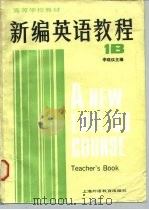
- 高等学校教材 新编英语教程 英语专业用 1B 教师用书
- 1986年04月第1版 上海外语教育出版社
-
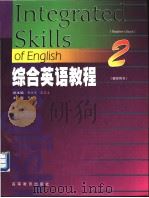
- 综合英语教程·教师用书·2
- 1999 北京:高等教育出版社
-

- 英语读写教程 教师用书
- 1990 高等教育出版社
-
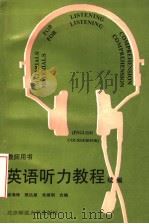
- 英语听力教程 续编 教师用书 英文
- 1993 北京:北京师范大学出版社
-
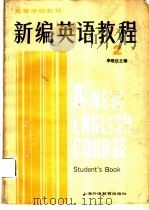
- 新编英语教程 2 学生用书
- 1986 上海:上海外语教育出版社
-
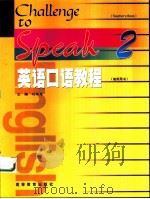
- 英语口语教程 教师用书 2
- 1999 北京:高等教育出版社
-

- 新英语教程 教师用书 第2册
- 1996 上海:上海科学技术出版社
-

- 新编一千零一夜-童话·寓言·故事 上
- 1991 北京:北京科学技术出版社
-
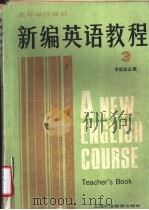
- 新编英语教程 3 教师用书
- 1987 上海:上海外语教育出版社
-
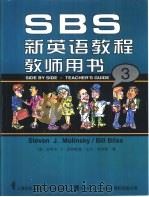
- SBS新英语教程 教师用书 3
- 1998 上海远东出版社;北京:外文出版社;西蒙与舒斯特国际出版公司
-
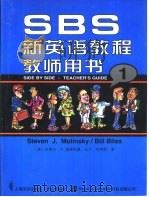
- SBS新英语教程 教师用书 1
- 1998 上海:上海远东出版社;北京:外文出版社;西蒙与舒斯特国际出版公司
提示:百度云已更名为百度网盘(百度盘),天翼云盘、微盘下载地址……暂未提供。➥ PDF文字可复制化或转WORD